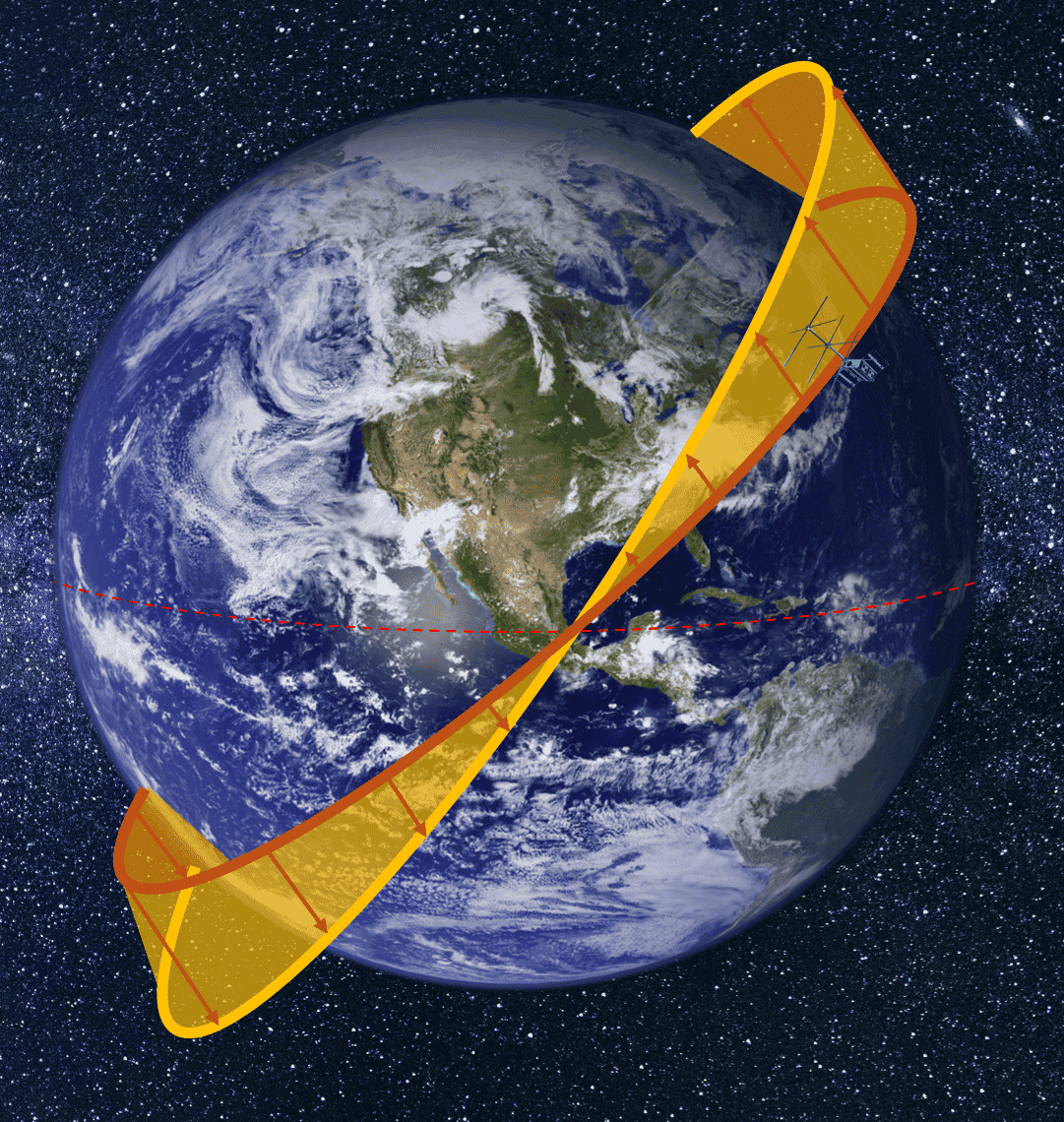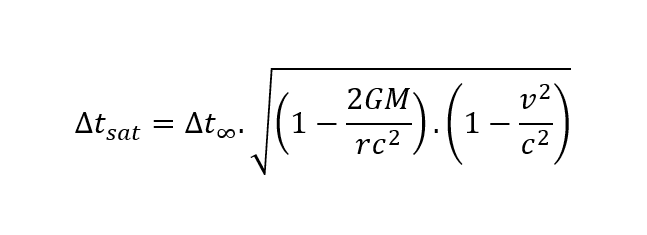Types of Perturbation
As many assume satellites orbit Earth in a perfect trajectory, it is a common misconception. In reality, due to Earth’s rotation the poles are slightly squished at the top, making it an oblate spheroid. This means that gravity is not evenly distributed across the planet, therefore, affecting satellite’s orbits. The J2 parameter is one of the parameters used to compensate for this uneven gravitational field, to adjust and keep the satellites in their proper orbit. The following picture illustrates how the J2 parameter acts to account for the Oblateness of the Earth: it pulls away from the Earth as, around the poles, the satellite is further from any mass that would attract it. Therefore, the closer to the equator, the smaller the J2 perturbation (the smaller arrows on the picture), and the closer to the poles, the bigger the perturbation (the bigger arrows).
In LEO (Low Earth Orbit), satellites encounter an additional challenge. Satellites’ velocity faces some resistance from the thickness of the atmosphere. This is known as atmospheric drag, and over time satellites lose altitude. The impact of drag’s effects depends on the satellite’s mass and cross-sectional area. The heavier the satellite is, the less likely it is to be affected by acceleration (as explained by the Law of Inertia) and the larger it is, the more drag it experiences. Some satellites operators/space agencies take advantage of some perturbations in their orbits. You can read more about this topic on “Space Curiosity – Types of Orbits”!
In addition, the gravitational forces of the Sun and the Moon also get to influence the satellites’ orbits. Since their bodies are massive and close enough to have noticeable influence, their effects need to be considered into long-term calculations. Moreover, the Sun constantly sends out particles of light that have an influence on the satellite’s trajectory – solar radiation pressure.


General Relativity
In terms of relativistic effects, as satellites move at high speeds and experience gravitational pull from Earth, time moves differently for them compared to people on the ground. As we are closer to Earth’s center than the satellites, we are more impacted by the gravitational pull and therefore, time is slower for us, this phenomenon is known as “general relativity”. This can be calculated through a very simple equation used by engineers to ensure time precision – also critical for systems like GPS (fun fact!). On the other hand, velocity makes the satellite’s run slower, and this phenomenon is the “special relativity”. This is another effect that needs to be accounted for.

The Log Chart
It’s important to mention that perturbations have different impacts, so some are more significant than others. The Log Chart shows how much of an impact a perturbation has, depending on the altitude.
It’s so interesting to see that even in the vacuum of space, so many factors and little details are in “charge” of keeping the satellites on course.
Published on 11/10/2024, Written by: Cyriaque Guillot, Marta Marinho Araujo dos Santos

